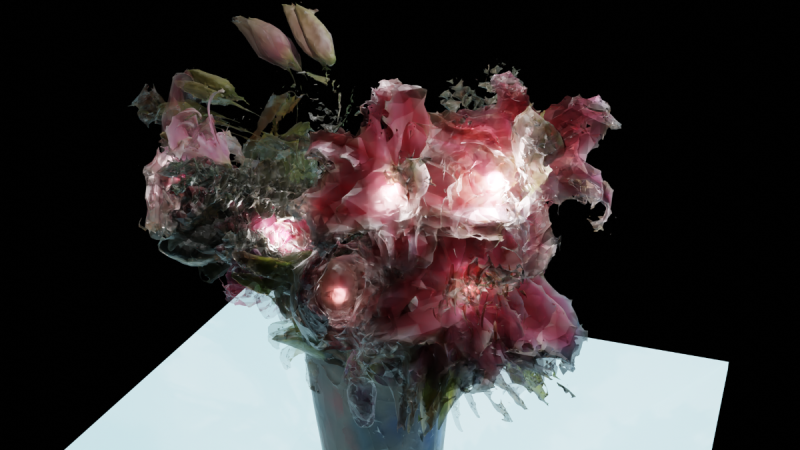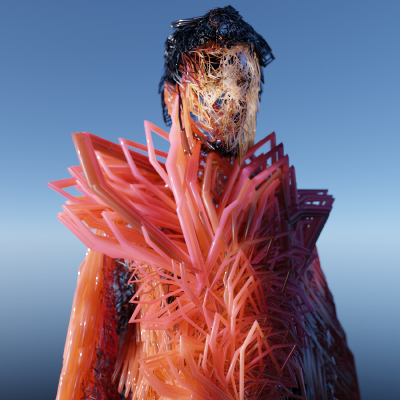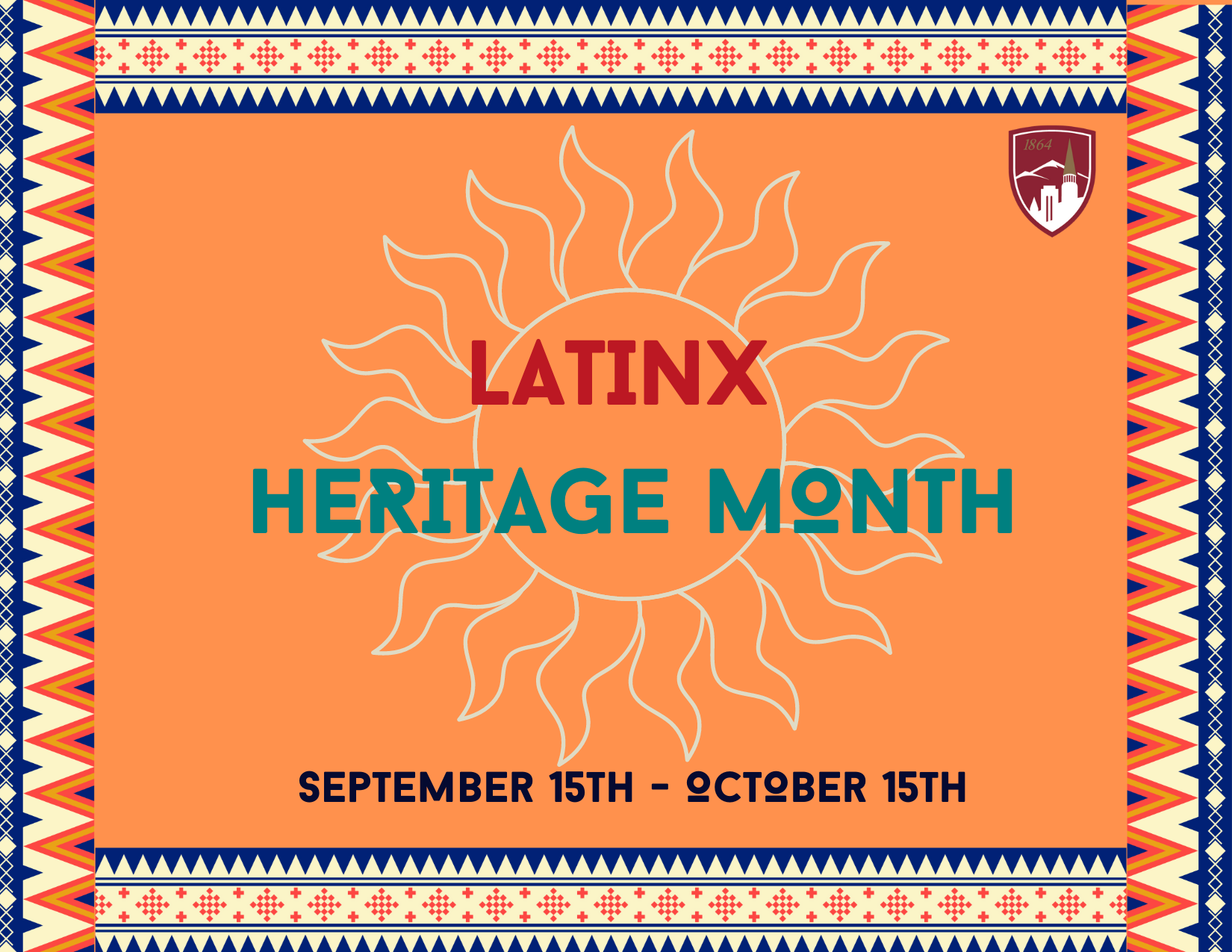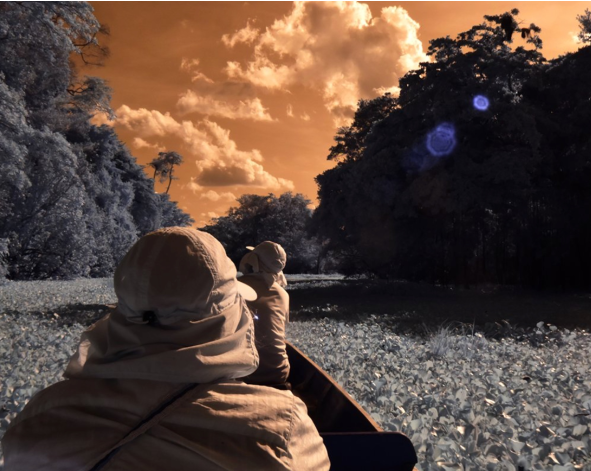Q&A: Are NFTs the Future of Art?

Branching Time (wip test #1). Timelapse 3D flowers photogrammetry. Chris Coleman 2021.
When artist Kevin McCoy and technologist Anil Dash paired up in 2015, they were looking to change the digital art economy. They introduced the first non fungible token (NFT), then referred to as a “monetized graphic,” at an annual conference at the New Museum as a way to empower artists to receive attribution and compensation for their digital artworks. They never imagined that NFTs would become a multi-billion dollar industry.
To learn more about how NFTs are changing the art world, we spoke with Emergent Digital Practices (EDP) Professor and Clinic for Open-Source Arts (COSA) Director Christopher Coleman. Coleman, who recently received a $6,000 donation to COSA that was tied to the purchase of an NFT, is a digital artist who regularly buys, sells and teaches about NFTs at the University of Denver.
As a professor in the Emergent Digital Practices Program at DU, how do you see students and alumni engaging with NFTs?
As a digital artist, this moment is unique in that it is the first time you can make a living from your art without working in advertising and related industries. If it lasts, it could mean a whole new way to engage with people and share art, digital or otherwise. We have a long way to go before that is a healthy, safe and accessible process though.
Have you created and minted any NFTs and if so, can you describe the process?
Chris Coleman 2022.
I have created about 150 different artworks that I have sold as NFTs, each with an average of 10 editions, meaning I am approaching 1,500 sales since March 2021. Minting involves preparing the art in a digital file that is acceptable to the marketplace; it can be anything from a video, PDF, audio file, 3D model or interactive code. Then you provide details like title, description and number of copies/editions you want to sell. Last, you need to set a price and put them on the market. This step of minting and pricing involves blockchain transactions and so will cost money in the form of cryptocurrency. This can range from $0.02 to $250 depending on the platform and currency.
Why do you think so many people are investing in NFTs?
First, I want to say that these are my opinions and not financial advice. Watching the market, the majority of people I see investing in NFTs are using them as commodities or lottery tickets. The “art” is secondary and only important so much as they are able to “flip” the NFT by selling it to someone else quickly and for a significant profit. Imagine the day-trading of stocks, but instead of stocks tied to companies or commodities, it is pictures of apes wearing hats that can gain ten times their value in hours or even minutes. People are looking for quick ways to become economically stable as inequality skyrockets. NFTs and crypto trading are the latest places to do this. Beyond that, there are people who care about the art, identifying with it or finding meaning in it. They are buying and sharing things that they love and supporting artists they want to see flourish. For the first time, this is easy to do, and you do not need a big house with empty walls to store all the art. Also, all the artwork posted and sold as NFTs is freely available to everyone to enjoy and even download whenever they want.
What are the pros and cons of NFTs for artists?
Artists can sell their art directly to collectors, without galleries that are gatekeepers and often take as much as 50% of the proceeds. As a long-term digital art collector, I can say it has never been so easy to collect art and support artists. In terms of drawbacks, NFT marketplaces have a long way to go to be user-friendly for artists and collectors. The costs just to put your work on sale can be significant, and it can also be complicated to turn your cryptocurrency earnings into cash. It is also a full-time task to promote your work and engage with your collectors, not to mention producing a fairly consistent flow of new artwork. The biggest issue is that cryptocurrency is very volatile and problematic in a number of significant ways, so you are building on top of an unstable foundation.
How do you go about predicting whether an NFT will gain value or not?
Much like stocks, you cannot fully predict what will gain value, and with marketplaces just now crossing the one-year mark, long-term value is incalculable. That said, once an artist becomes fairly popular, their work can build more value over time. The general equation for success for an artist is a combination of the number of followers and likes they have on social media, their digital skills, their marketing savviness and how well they can grab attention. In addition to buying work from popular artists, many people are looking for something cheap that will catch on later and become super valuable.
Who stands to benefit the most from a booming NFT marketplace?
Early adopters and people who bought crypto early on. There is a trickle-down effect from the people who bought cheap cryptocurrency early on that gives some artists the funds to make a living for the first time ever, but it is a side effect of the market. If people are buying NFTs to make big profits, they are probably too late. You might win now and then, but it is only a little better than buying lottery tickets. That said, if people have the money and want to collect art and support artists, they should do that! Artists need real support in the U.S.
Which artists, organizations or communities have you looking forward to their next NFT drops?
The Feral File platform is tightly curated and run by a prominent artist, Casey Reas. The artwork sold there as NFTs is focused on ideas and aesthetics and much less about commodification. It uses blockchain technology but is less involved with cryptocurrency than other platforms. I am also involved with TEIA, a community-run NFT platform originating in Brazil. They are very focused on the global visibility of artists from many backgrounds and cultures. The work there sells for much less money and only costs cents to mint, so it is a vastly different culture than most popular platforms. It also uses blockchain technology that is more eco-friendly because it uses way less energy than popular blockchains.
How can the DU community learn more about and get involved with NFTs?
I have been offering workshops every quarter to help students decide if they want to be involved, focusing on EDP majors and minors. Right now there are no single sources to learn about NFTs and how to make smart decisions about buying or selling them. Much of the content on YouTube is very deceptive and produced by people who need new adopters to keep coming and making foolish investments so they can make money. All of that said, this recent article by Matt Deslauriers provides a summary from a digital artist explaining many aspects of what is going on and providing links to go deeper.







